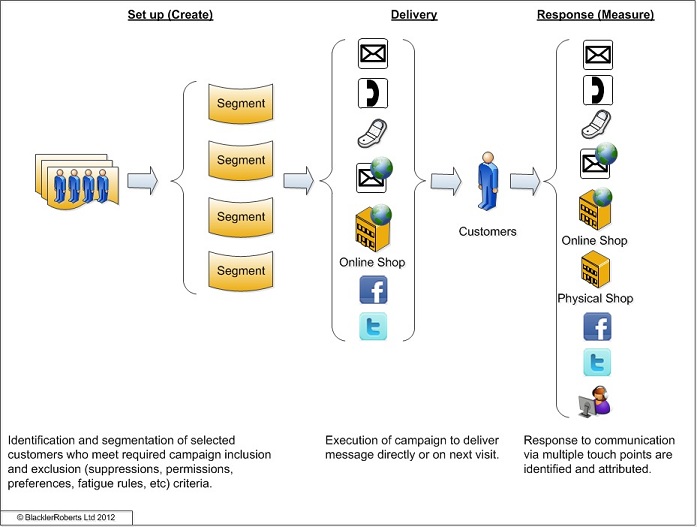Discovering the Requirements – Understanding your communication needs
In the last posting we looked at how you understand and define the key deliverables and solution objectives. We will now turn our attention to look at the first of three key aspects of a Customer Marketing solution, understanding your communication needs. This posting is the fourth instalment of the Discovering the Requirements series. If you are joining the discussion now, you may want to start by reading the first posting.
At this point we have now moved from objectives and goals to look at the detailed requirements of the solution. This can lead to stepping into design as the requirements are identified and documented which should be avoided by continually checking to ensure only the solution needs are identified. This can be achieved by asking the question ‘Does this define the Customer Marketing solution need/problem or does it state how it should be delivered’ against each requirement. The reason for this is to ensure a complete picture of the requirements are identified before moving towards designing the solution, otherwise a solution will be constrained by early design decisions based on incomplete facts.
When looking at campaigning there are several areas to consider:
- Why should we send a communication? (Acquisition, Welcome, Retention, etc)
- Who to contact?
- What to contact them with? (Message/Offer)
- Where to contact them? (Which medium/channel)
- When to contact?
- How will you measure success?
As you develop your campaign programmes each of these areas will need to be considered to ensure your campaign meets the original budgetary objectives. This posting will concentrate on the building blocks required to enable campaigns to be created and maintained within the Customer Marketing solution.
The first step is to ensure a common picture of the physical steps required to create, deliver and measure a campaign are understood. This will ensure any special processes or assumed activities are known, reducing the risk of miscommunication to customers through existing manual steps such as an application of a local copy of key customers to be suppressed or credit screening process. The diagram below (Figure 1) provides the key simplified elements of a campaign and will allow the campaign process to be reviewed and validated.
Figure 1
Once a clear view of the basic steps is established a review of existing and future campaigns can be completed to provide understanding of the requirements for communications. To ensure all campaign types are covered, the key lifecycle stages from acquisition, on-boarding, growth and retention through to lapsed, can be used to look at the different communication programmes being utilised.
Finally for each campaign type identified the following elements should be assessed:
- Campaign Name and Objectives;
- Channel/s of communication;
- Frequency of campaign execution;
- Trigger mechanism;
- Level of communication;
- Selection Criteria;
- Segmentation (including key coding);
- Exclusion (global and campaign specific);
- Seed details;
- Sampling;
- Control;
- Fulfilment;
- Monitoring (communication history and measurement).
Please join me next week when I will turn my attention to look at analysis and reporting, using the information gathered for campaign inclusions and exclusions to help with the identification of core analysis metric needs. (Week 5: What analysis will I require?)
If you have any further questions or would like support / guidance in discovering or defining your Database Marketing solution, please contact me through the BlacklerRoberts Ltd “Contact Us” page and I will be happy to discuss your needs. You can also follow @BlacklerRoberts on twitter for further insights.


Leave a Reply